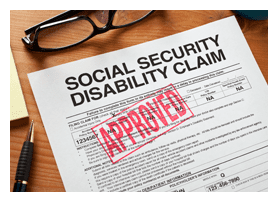Bipolar disorder causes severe mood swings that can make learning, working, or other aspects of daily life difficult to perform. Fortunately, the Social Security Administration offers financial benefits to help alleviate these struggles.
These benefits, called Social Security Disability benefits, are available to those who meet certain requirements and successfully complete the application. An adult or child living with Bipolar disorder can benefit from understanding the entire disability process in order to gain the financial support deserved.
Disability Benefits Program Options
You will most likely be applying for one of two main disability programs offered by the Social Security Administration: Social Security Disability Insurance (SSDI) or Supplemental Security Income (SSI).
SSDI is for disabled workers and who have paid Social Security taxes from their paychecks. You will asked for a job history when you apply, which will show that you have worked for long enough to qualify for SSDI. This makes SSDI more suited for working adults. http://www.disability-benefits-help.org/ssdi/qualify-for-ssdi
SSI is another benefit program similar to SSDI, but is intended specifically for elderly and disabled individuals. Instead of a job history, you will be asked to demonstrate that you meet the SSA’s strict financial limits. This makes children good candidates for SSI, since they will not have had much experience working. In the case of applications for children, the Social Security Administration will ask a parent to submit part of their finances for evaluation as well.
Medical Eligibility
In addition to the financial or work requirements listed above, you will also have to qualify medically if you wish to receive benefits.
The Social Security Administration determines medical eligibility according to a guidebook of all disabling conditions, which is called the ‘Blue Book.’ Anyone seeking disability benefits from the Social Security Administration must be able to match their case with the set of requirements listed under their condition.
In the Blue Book, there are separate listing sections for adults and children.
For adults, Bipolar disorder is found in Section 12.04, Mental Disorders/Affective Disorders. For children, the condition is listed in Section 112.04, Mental Disorders/Mood disorders. http://www.disability-benefits-help.org/disabling-conditions/bipolar-disorder-and-social-security-disability
The adult listing asks that you have a two-year history of bipolar disorder and you receive treatment for the condition. You will also need to show certain symptoms specific to the condition. For children, the listing requires observation of a number of symptoms fitting Major depressive syndrome and Manic syndrome.
The Application
The application itself requires plenty of organization and attention to detail. Here is a quick overview of the process and how to begin:
- Make sure to have medical records and any helpful information about your case before you apply. This could mean hospitalizations, therapy records, your diagnosis, and any statements from professionals.
- There are two ways to initiate the application: in person during a meeting with someone from the Social Security Administration or by filling out the forms online. Applications for children, however, MUST be done in person.
- The Social Security Administration will then conduct its evaluation using your information and its own professionals before making a decision.
What to Expect
You will likely need to wait at least a month or often longer before you receive a decision from the Social Security Administration. Many initial applications are rejected for being incomplete or not clearly meeting the eligibility requirements. If this happens to you, do not panic. You have 60 days to submit an appeal of the decision. While this may seem time-consuming, this is often how many people end up receiving benefits.
If you think you might struggle with any part of the application, you may want to hire a disability advocate to help you. They will guide you as you prepare the application and will present it before the Social Security Administration on your behalf. These advocates are experts in the process and only take payment if you are approved.
Conclusion
Although the disability benefit application can be confusing and difficult, the benefits themselves can be well worth it. They can be used to pay for appropriate treatments and medical bills, but they can also be used for daily expenses like food and utilities.
By following the steps, including choosing the right benefit program and having the information needed to meet the medical eligibility requirements, you can put yourself in a good position to be approved for Social Security Disability benefits.
Resources
Social Security Disability Help (Author of Article)
- Email: lgg@ssd-help.org
- http://www.disability-benefits-help.org/
Disability Help Center (based in San Diego but offers assistance Nationwide)
- Email: help@ssdhelpcenter.org
- https://www.disabilityhelpcenter.org/

